

Home for a sports dome?
Developer presents plan for indoor fieldhouse
BY JASON STARR Observer staff
A sports-minded real estate developer from Stowe has sights set on Williston for a uniquely constructed indoor turf fieldhouse to facilitate year-round play of team sports like soccer, lacrosse, football and many others.
Adam Hergenrother, a native of Colchester and founder of Adam Hergenrother Industries,
has submitted a site plan to the Williston Planning and Zoning Department for what is known as a “sports dome” — a rounded, air-filled structure that uses differential indoor-outdoor air pressure to remain structurally sound.
“It looks different, but to me it looks awesome,” Hergenrother said. “It looks like the town and the community support athletics.”
Hergenrother is the father

of three, all lacrosse players. In recent years traveling to out-ofstate tournaments, he’s noticed these domes popping up and
being full of activity. The proposed location for the Williston sports dome is on an open lot just north of WalMart and Home
First-responders: Emergency communications need upgrade

fire departments hope to more than double the height of their radio communications tower on Old Creamery Road to improve emergency communications. OBSERVER PHOTO BY JASON STARR
Town seeks state approval for 180-foot radio tower
BY JASON STARR Observer staff
The Town of Williston plans to apply in December for a “certificate of public good” from the Vermont Public Utilities Commission to more than double the size of a communication tower on Old Creamery Road.
Both the town’s fire chief and police chief say the higher tower 180 feet — is needed to upgrade what they describe as dangerously inadequate public safety radio communication infrastructure.
If the PUC issues the certificate, the Williston Selectboard plans to consider asking voters for borrowing authority to fund the estimated $3 million project.
In addition to replacing the tower, which is currently 70 feet in height, the project would also include an upgrade of all associated emergency communication equipment.
First-responders rely on handheld radios that depend on the Old Creamery Road tower to communicate with each other and dispatch centers in Shelburne and Essex. Police Chief Patrick Foley and Fire Chief Aaron Collette told selectboard members last week that communication failures are currently common during emergency responses.
“Public safety requires ultra-high reliability at all times,” Foley said. “The current coverage is neither safe nor sustainable … putting officers and the community at a serious risk.”
Collette said dozens of fire department incident responses have had communication issues this

year resulting in firefighters unable to call for mutual aid from neighboring fire departments and unable to reach an incident commander.
“When we need assistance on a building fire and we can’t reach the dispatch center, that’s critical time it takes away from getting extra resources on scene,” Collette said. “It’s putting our firefighters and civilians at risk.”
The tower is in a clearing next to a Vermont Electric Power Company (VELCO) transmission line corridor at 64 Old Creamery Road. According to Town Manager Erik Wells, the town has a 40-year lease with VELCO for the land.
A 30-day comment period will be part of the town’s application to the Public Utilities Commission.
Assistant Town Manager Erin Dickinson said she expects to file the application during the first
week of December and hopes to have a certificate of public good by January.
“The Public Utility Commission is an independent, three-member, quasi-judicial commission that regulates the siting of electric and natural gas infrastructure,” the PUC website explains, “and supervises the rates, quality of service, and overall financial management of Vermont’s public utilities: electric, gas, energy efficiency, telecommunications, cable television … water, and large wastewater companies.”
If the certificate is approved, the town would then finalize a cost estimate and prepare for a 2026 bond vote to coincide with either the national primary election in August or the general election in November.
“I think it’s important that we do this,” selectboard member Mike Isham said. “In an emergency, seconds count.”



The Williston police and
Depot on Harvest Lane. The property is owned by J.L. Davis Realty. Hergenrother has homed
An indoor view of a ‘sports dome’ style fieldhouse in Ontario, similar to the one proposed for Williston from the Canadian company, the Farley Group.
PHOTO COURTESY OF THE FARLEY GROUP
Give what you got
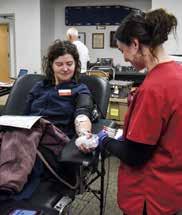

Around Town
Seeking opinions on Old Creamery traffic
The Williston Public Works Department is initiating a traffic study for Old Creamery Road and is looking for public feedback about transportation and speed management in the area.
A public concerns meeting will be held at Town Hall on Dec. 2 starting at 7:45 p.m. Bring your thoughts on solutions to accommodate various modes of travel and enhance safety and efficiency.
For more information, contact the public works department at (802) 878-1239. Visit the town website (www.williston.town. vt.us) to submit your responses to an online survey about Old Creamery Road traffic.
Industrial Ave. construction wraps for season
Construction at the intersection of Route 2A, Industrial Avenue and Mountain View Road
has concluded for the season.
Since the start of construction in the spring, Vermont Agency of Transportation crews have completed road-widening, drainage improvements, sidewalk installation and traffic signal upgrades throughout the nearly 1-mile project zone.
Work will resume in the spring with continued road-widening on Route 2A and installation of stormwater infrastructure, signs, curbs, sidewalks and streetlights. The project is due to be complete in the fall of 2026.
To complete VTrans’ online survey about traveler experience through the project zone, go to: https://www.surveymonkey. com/r/K3TKZKV.
COMMUNITY CALENDAR
EMAIL EVENT LISTINGS TO EDITOR@WILLISTONOBSERVER.COM
TUESDAY, DEC. 2
Old Creamery Road traffic study. Provide input on traffic management. 7:45 p.m. Town Hall. More information at (802) 878-1239.
TUESDAY, DEC. 2
Williston Selectboard meeting. 7 p.m. Town Hall. Agenda at www. town.williston.vt.us.

WEDNESDAY, DEC. 3
Red Cross Blood Drive. 12-6 p.m. Richmond Congregational Church. Schedule an appointment at redcrossblood.org or by calling 1-800-733-2767.
SATURDAY, DEC. 6
Richmond Holiday Market. Crafts, lunch, book sale, live music, food and toy donation. 9 a.m.-3 p.m. Richmond Congregational Church. Email spochop@uvm.edu or call (802) 318-5360.
SUNDAY, DEC. 7





Williston Community Tree Lighting. Carols, cookies and cocoa as the town Christmas tree is lit. Donations of hats, mittens, gloves and socks accepted for the food shelf. 4:30-5:30 p.m. Village Green.
MONDAY DEC. 8
Senate Committee on Education hearing. Give feedback to legislators about statewide education policy. 2:30 p.m.-4:30 p.m. CVU High School.
THURSDAY, DEC. 11
Jonathan Milne Senior Holiday Luncheon. Williston Central School choir performance and holiday meal, sponsored by the WillistonRichmond Rotary Club. 11 a.m. RSVP required by Dec. 6 by calling (802) 489-8159.
Donor Addison Weening gives the gift of life while Red Cross technician Marrisa Gillis takes some samples at the Williston Fire Department’s blood drive on Saturday.
OBSERVER PHOTO BY AL FREY

GREEN
Energy enthusiasm at VECAN conference
BY REED PARKER AND PAT RATKOWSKI
Williston Energy Committee
On a grey Saturday in early November, when much of the news is anything but cheery and discord runs rampant throughout our society, one doesn’t expect to find a groundswell of enthusiasm in an old Vermont inn. But that was just the case when over 200 Vermonters representing 78 energy committees from across our state gathered at the Lake Morey Resort in Fairlee for the 18th Vermont Energy and Climate Action Network (VECAN) conference.
VECAN (www.vecan.net) is a network of over 100 volunteer town energy committees and supporting organizations, including the Vermont Natural Resource Council (VNRC), Efficiency Vermont, nonprofit and for-profit energy-focused organizations, and many of our state’s utility companies. While most energy committees are focused on local or county issues, VECAN is the glue that enables us to connect and
share ideas across the state.
The Lake Morey Resort was the traditional place for the VECAN conference for many years until COVID halted the gathering. Now, five years later and after a year of planning, the conference was back and in full force!
Even in our small state, we can easily get disconnected from people who live a couple of hours away. From the very beginning of the conference, you could feel the enthusiasm as attendees shook hands and shared hugs with people they might not have seen for several years.
The VECAN conference has always focused on sharing ideas, presenting new information and hearing from state and national experts in the fields of energy conservation and climate action. And this conference did not disappoint.
Opening with presentations by members of the Vermont Climate Council, attendees heard some things that we knew (large floods are more common and Vermonters pay too much for our energy as a
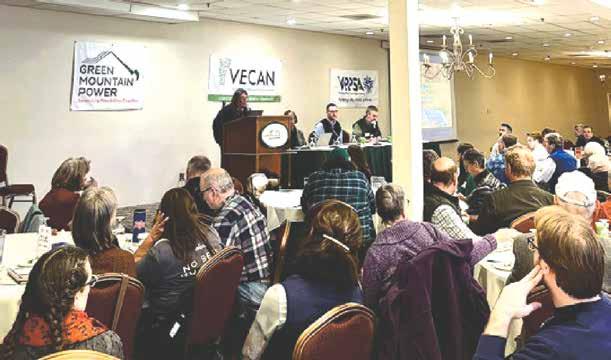
percentage of income) and things we may not have realized (the 2025 Vermont Climate Action Plan is just the starting point).
Climate council member David Mears made the analogy to sourdough bread: the Climate Action Plan is just the starter, and the hard work is in front of us to implement it.
We were also excited to learn about the large number of students from both public and private
colleges who are working with energy committees, providing research and helping implement our local plans.
Breakout sessions are a key to the success of this conference.
Small panels present on specific topics to about 20 attendees each.
These lively, interactive sessions included such topics as housing, solar in Vermont, community resilience, transportation transformation, legislative priorities and
many more.
In the “community engagement and outreach” session, we heard helpful discussions about issues we, as energy committee members, often consider: What are the priorities of our residents? How do we effectively reach individuals who need assistance? It made us think that, if a project is to be successful, we need to effectively communicate its scope and gain community
The VECAN conference earlier this month in Fairlee attracted about 200 attendees.
COURTESY PHOTO
see VECAN page 5

Making progress on the Vermont Conservation Plan
Vermonters are invited to participate in the planning process for implementation of the Vermont Conservation Plan — the state goal of conserving 30 percent of Vermont’s lands and waters by 2030 and 50 percent by 2050.
Join the Vermont Land Trust at the Delta Hotel in South Burlington from 2-5 p.m. on
Dec. 2 for a chance to network with conservation experts, hear the latest on Vermont Conservation Plan progress and participate in small group table discussions. Register online at tinyurl.com/vermontconservation.
Other sessions will take place in Lyndon, Randolph and Rutland.
Input sought for e-bike policy at state forests, parks
The Vermont Department of Forests, Parks and Recreation is seeking public input on an electric bike policy for state forests and parks.
The department is proposing an update to the current policy that would allow all classes of e-bikes on state park roads, forest highways, gravel roads and multi-use paths.
The policy would designate a 20-mph speed limit, with an option for lower speed limits.
Comments can be submitted online through Nov. 28 — and the full policy read — on the “Public Input Opportunities” section of the department’s webpage at https://fpr.vermont.gov/recreation/ using-state-lands-recreation.

Nine new bee species discovered in Vermont
BY LAUREN MILIDEO Special to the Observer
A new count of Vermont’s bee species has identified nine species not previously reported in the Green Mountain State, bringing the total number of species in Vermont to 352, more than any northern New England state.
“Insects are so diverse and poorly studied that if you look hard for them, you’ll find ones that no one’s found before,” said University of Vermont pollination expert Taylor Ricketts, director of UVM’s Gund Institute for Environment and coauthor of a new bee study published in the journal Northeastern Naturalist.
Nonscientists can now contribute bee sightings to ecological databases using phone apps. And over the past few decades,




A new count of bee species in Vermont puts the total number of species at 352.
PHOTO COURTESY OF UVM

GREEN
VECAN
from page 3
trust for our goals and plans.
Elsewhere, at the “legislative look forward” session, Sen. Anne Watson and Rep. Kathleen James discussed their efforts to move sustainable and affordable energy
(McKibben) spoke eloquently about the expansion of solar energy across the globe.
forward, despite substantial policy headwinds at both the federal and state levels. The focus is currently on protecting Vermont’s existing initiatives, including the Global Warming Solutions Act, the Climate Superfund Act, the Climate Action Plan, and the Affordable Heat Act.
At the “helping Vermonters navigate clean energy projects” session, we heard representatives from Efficiency Vermont, New Hampshire’s Energy Circuit Riders, and Energy Navigators speak about their ongoing efforts to help homeowners, landlords and commercial operations find the sustainable energy upgrades and renovations that best suit their needs.
The absolute high point of the VECAN
conference is always the keynote speaker. This year we had the privilege of hearing from Vermonter Bill McKibben, an internationally known speaker, founding member of 350.org and Third Act, and author of the new book “Here Comes the Sun.”
Despite having just returned to Vermont from his book tour (“44 hotels in 51 days”), Bill spoke eloquently about the expansion of solar energy across the globe (on average, every eight hours, China builds enough new solar power to retire a coal plant), including the fact that new solar and wind energy generation is now less expensive than fossil fuel generation. Referring to the accelerating buildout of solar power worldwide, he said “We’re on the edge of changing the earth as never seen before.”
As members of the Williston Energy Committee, we were very glad to be able to participate in this valuable conference, where we interacted with other energy committee members and learned about the positive actions being taken to make Vermont and the earth a better place to live.
To participate in Williston’s energy future, reach out to your Williston Energy Committee at energy@willistonvt.org or attend a public meeting held on the second and fourth Wednesday of each month. The agenda for upcoming meetings is posted on the Town of Williston website (www.town. williston.vt.us). For more information, visit: https://www.willistonvtenergycommittee.org.






FRIDAY, NOVEMBER 28
Celebrate the start of Holidays on the Marketplace with Burlington’s cherished Santa Parade and Tree Lighting Ceremony. Church Street will come alive with music, lights, and the warmth of community. We can’t wait to see you there!

on the Church Street Marketplace
GUEST COLUMN
A second chance at school reform
BY JACK HOFFMAN
The Act 73 Redistricting Task Force has wrapped up its work, and it’s given the state a chance to rethink the course of education reform it has been pursuing for the last decade. Vermont communities, as well as elected leaders, should seize this opportunity to get us out of the ditch we’ve been in and refocus on what should be our priority: ensuring our kids have what they need to thrive.
The task force’s 168-page draft proposal has a lot to digest. And it requires close reading because it offers much more nuanced analyses of problems confronting the education system than we’ve seen from the administration or the Legislature in recent years.
One of the group’s most important recommendations is to stop further forced consolidation of school districts, which fits with one of the task force’s guiding principles: Do no harm. It’s not that the committee opposes mergers. It recommends voluntary consolidation for some
districts in certain circumstances, which was the state’s policy before passage of Act 46 a decade ago.
Like all recent education reform plans, the task force focused on costs. But it didn’t offer the usual “we-have-to-do-something-about-Vermont’s-skyrocketing-education-spending” refrain, which has pitted the administration and the Legislature against local school officials for too long. Instead of demanding that school districts curb their spending, the task force suggests a process in which districts col laborate, with lots of support and help from the Agency of Education, to find ways to save money.
The report includes examples of potential cost savings, and none of them appear to require an overhaul of the education financ ing system. For example, the task force points to areas where public schools have seen a rise in per pu pil spending because they’ve lost students to independent schools (a decline in students can drive up taxes.) Fixing this would require
Community Newspaper Since 1985
www.willistonobserver.com P.O. Box 1401, Williston, VT 05495 | 802-489-5499
ADVERTISING
Rick Cote, Associate Publisher rick@willistonobserver.com 802-373-2136
EDITOR
Jason Starr editor@willistonobserver.com
PRODUCTION & DESIGN
Jan Kenney
jan@willistonobserver.com
PUBLISHER
Susan T. Cote susan@willistonobserver.com
BILLING INQUIRIES
Michael McCaffrey office@willistonobserver.com
Member:
ADVERTISING SPACE DEADLINE
Friday at 5 p.m. for the next Thursday issue rick@willistonobserver.com, 802-373-2136
CLASSIFIED ADS
Deadline is Friday 5 p.m. There is a fee for business, real estate, help wanted and legal ads. Free classifieds must be 25 words or fewer and are printed on a space available basis.
SUBMISSIONS & LETTERS
Deadline is Monday noon for Thursday issue. News/ story tips are welcomed. Letters to the Editor should be 300 words or fewer and include your name, address and a daytime phone number so that we can verify the letter’s author.
The Williston Observer reserves the right to edit or refuse submissions or advertising. Opinions expressed in the paper are those of the writer and do not necessarily reflect the opinion of the paper.

that small schools need to close because it’s the small communities that are losing students.
The report referenced other cost drivers, but not in much detail because they were beyond the scope of the committee’s mission. They deserve mention, though, because they go to the heart of perhaps the most consistent complaint about Vermont’s funding system: per pupil spending.
Vermont spends more than

pay for services through the general state budget — and through county budgets in some cases — that Vermont covers through the Education Fund. Moving costs from the Education Fund to the General Fund wouldn’t eliminate them, but it would relieve pressure on education property taxes, and lower Vermont’s average per pupil spending.
Vermont saw an unusual jump in education spending and school taxes in fiscal year 2025, which set off the current scramble to remake the state’s education funding system. But some homeowners are getting hit with tax increases not tied to spending increases. There are ways to address those jumps and make the tax system fairer without the disruption of more consolidation or upending the entire system. But that, too, was beyond the scope of
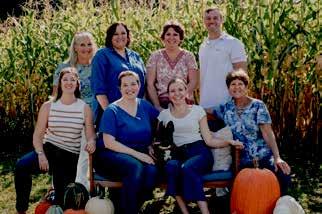

LETTERS TO THE EDITOR
All for food shelf rental assistance
Our town administration is in the process of putting together next year’s budget that we will vote on at our next Town Meeting. Last year, the town granted $6,000 to support the Williston Community Food Shelf. The food shelf’s current annual budget for rent and utilities is $43,000. That’s right — $43,000 just to have a usable space before a dollar can be spent on food!
In these times of food insecurity from an increasingly scarce job market and government social services, we as a community need to open our hearts and wallets and help this group of dedicated folks service our most vulnerable fellow citizens with one of their most basic needs.
I am suggesting that we include full funding of $43,000 to pay their rent and utilities in next year’s budget. Please write Town Manager Erik Wells and our selectboard members and ask that they include this funding in next year’s budget.
The food shelf also accepts donations of food and money.
Brian Forrest Williston
Hoffman
continued from page 6
the task force’s mission and can be addressed separately.
What the Redistricting Task Force has laid out is a more nuanced approach that has a better chance of gaining public acceptance than something imposed by Montpelier. It will require addressing a lot of specific problems rather than a one-size-fitsall solution. And it offers greater opportunity for local community engagement, which is critical to making any change work.
At a time when democracy is under threat across the country, it makes sense to protect and preserve it here at home — for our communities and our kids.
Jack Hoffman is senior analyst at Public Assets Institute in Montpelier, online at www.publicassets.org.
from page 4
some locations in the state have also been more extensively studied by researchers.
UVM’s decade-long study analyzed nearly 80,000 bee reports — a combination of citizen-submitted data from public databases, scientific papers and museum collections. Of the 352 species identified in Vermont, about 150 were found in Burlington’s Intervale alone. Study authors also found Vermont is playing host to boreal bee species more often found in the higher mountains of the American West.
“We recruited and trained community science volunteers to find, photograph and share wild bee encounters to our iNaturalist Vermont project, which now make up the majority of scientific records of wild bees in Vermont,” said Spencer Hardy, lead author of the paper and bee expert at the Vermont Center for Ecostudies. “And it keeps growing.”
The project is the first statewide count of pollinator species since 1962. Researchers at that time reported just 98 bee species in the state. The updated data comes as Vermont implements Act 182, which bans the use of neonicotinoid pesticide-treated seeds in Vermont’s crops. Vermont is the second state in the nation to pass such a ban. Quebec banned neonicotinoids in 2019.
Widely used in agriculture, neonicotinoids are a class of insecticides that can be deployed as a seed treatment. Plants growing from these seeds incorporate the pesticide in their tissues. According to the Xerces Society, a nonprofit conservation organization, studies have linked neonicotinoids to negative impacts on various species of bees, affecting everything from their feeding to reproduction.
The new bee count offers a baseline for how untreated seeds and plants will affect bee populations, Ricketts says. It also sheds light on what’s happening with these pollinators in an agricultural state that’s been seeing increasingly severe climate disasters in recent years, including floods and drought.
Ricketts points out that the
P.O Box 1401, Williston, Vt. 05495
vast majority of Vermont’s bees nest not in trees or structures but underground. That makes them vulnerable to flooding, and scientists are trying to figure out what effect extreme flooding events have on bee populations.
Knowing the current state of bee populations gives scientists a starting point to determine what’s changing over time in response to extreme climate events. It’s part of a larger effort by UVM researchers, in concert with other organizations, to support pollinators across the state. Previous work has included research into the value of native pollinators of
“Thanks to the efforts of thousands of Vermonters, we’ve learned an incredible amount about the status of wild bees in Vermont.”
Kent McFarland Study Co-author
iconic Vermont crops like apples and blueberries, effects of neonicotinoids on pollinators, and public outreach to educate farmers and gardeners about creating pollinator-friendly fields and gardens.
“Thanks to the efforts of thousands of Vermonters, we’ve learned an incredible amount about the status of wild bees in Vermont,” said study co-author Kent McFarland. “But it will take strong collaborations between biologists, public agencies, conservation organizations, landowners, land managers and even beekeepers for us to conserve Vermont’s diverse wild bee fauna effectively now and for future generations.”
To see an interactive checklist of Vermont’s bee species, visit the Vermont Atlas of Life online at https://val.vtecostudies.org/ projects/vtbees/bee-checklist/
Lauren Milideo is the strategic communications manager at the Gund Institute for Environment at the University of Vermont.





State employees’ union sues Gov. Scott
Workers oppose return-to-office mandate
BY SHAUN ROBINSON VTDigger
The union representing Vermont state employees is turning to two legal venues to challenge Gov. Phil Scott’s order that many of its members return to the office in person.
On Nov. 10, the Vermont State Employees’ Association filed a charge with the state’s Labor Relations Board alleging the Scott administration skirted a union demand to enter formal bargaining over the return-to-work plan, in violation of labor protection laws. The plan will require many employees to come into the office at least three days a week.
The union also filed a separate grievance with the Labor Relations Board arguing that parts of the plan violated the collective bargaining agreement it has in place with the state.
Then, on Nov. 12, the union
filed a lawsuit in Washington County Superior civil court asking a judge to bar the Scott administration from implementing its workplace plan — set to take effect Dec. 1 — until the labor board adjudicates the union’s complaints.
The union wrote in its lawsuit that “neither the unfair labor practice charge nor the grievance is capable of being decided” by the labor board before Dec. 1. The suit seeks a temporary restraining order or a preliminary injunction that allows state employees to continue working remotely.
Steve Howard, the union’s executive director, said he hopes the suit would at least slow the implementation of the governor’s directive.
The legal challenges mark a significant escalation in the monthslong fight between the union and the administration over the plan to have state workers, with some exceptions, return to the office. The union contends that the hybrid work mandate will
cause experienced employees to quit, decreasing the quality of state departments’ work.
At the same time, administration officials say that the order will improve government services by boosting collaboration and helping to preserve institutional knowledge. They’ve argued Vermonters want government workers to be present in-person.
In a statement, Amanda Wheeler, a spokesperson for the governor’s office, said the union’s legal challenges had no impact on Scott’s support for the plan.
“The Administration’s decision to implement this standard is well within our authority,” Wheeler wrote. “The Governor’s position on returning to a hybrid work standard has not changed, he continues to believe human connection is an important part of employee engagement, as well as team building and learning from each other.”
According to court filings, after the administration formally announced its return-to-work


plans in late August, it wrote to the union in September requesting a meeting to discuss the plans and hear the union’s concerns. In that letter, which is attached to the lawsuit, John Berard, the state’s director of labor relations, said the plan did not need to be the subject of formal bargaining. That’s because the planned hybrid work requirement was permissible under an existing teleworking policy for state employees, he said.
But the union doesn’t see it that way. In court filings, the union contends state leaders agreed to remote working arrangements for their employees, starting at the outset of the Covid-19 pandemic, that did not fall under the stipulations of the teleworking policy. Those arrangements “have become an established condition of employment which the State is not free to change” without entering formal bargaining, the union wrote in an Oct. 24 letter to the state. It demanded, in that letter, that bargaining take place.

The legal challenges are set to play out as the state has expanded its workspace ahead of the planned return to office for many employees. It has signed leases for three new office spaces in the privately owned Pilgrim Park complex in Waterbury, which records show would be used by workers at the state Agency of Human Services.
That agency has been facing a shortage of office space at the nearby Waterbury State Office Complex, where much of its operations are based. The shortage could delay the restart of in-person work for some employees past Dec. 1, officials said previously.
The state is set to pay about $2.3 million to lease the new office space over the next five years, according to the leases.
Berard then wrote the union back Nov. 10 saying the state’s position had remained unchanged, according to court filings. That’s the same day the union filed its challenges with the state Labor Relations Board.














Vermont appeals Trump’s rejection of disaster aid for July 2025 flooding
BY SHAUN ROBINSON VTDigger
Gov. Phil Scott last Friday formally appealed President Donald Trump’s rejection of a state application for federal disaster aid stemming from flooding that struck the Northeast Kingdom in July this year.
Scott and his top deputy for flood recovery, Doug Farnham, had previously said the administration was working on an appeal of Trump’s decision, which came in October.
The state is asking the feds for a major disaster declaration, which in this case, would allow towns in Caledonia and Essex counties to unlock Federal Emergency Management Agency funding to cover the costs of repairing critical infrastructure and starting new projects to halt the risk of future flooding, among other possible expenses.
In a press release, the governor’s office said its appeal pointed to how it can be expensive for towns to rebuild their infrastructure in accordance with modern flood resilience guidelines. It also pointed to “the
cumulative economic effect on the state and communities that have seen catastrophic floods in each of the last three years.”
Some towns in the rural region experienced flooding in 2025 on the same day they experienced flooding in 2024 and 2023.
“After submitting our disaster declaration request, we learned about more damage that wasn’t included in our initial submission,” Scott added in the release. “This information significantly increases financial burden for repairs which we believe strengthens our appeal.”
Officials said previously that recovery costs were proving to be higher in the Caledonia County town of Sutton — seemingly the worst hit this year — than they previously thought. Sutton suffered more than $1 million in damage, according to Scott’s office.
The appeal was sent to FEMA, according to the press release, which will review it and then send a recommendation to Trump, who will approve or deny the request.
It’s far from a guarantee that Trump will change his mind after seeing Vermont’s appeal. At least two other states — Maryland and Michigan — had appeals for disaster

aid stemming from major weather events rejected by the White House this fall.
Trump’s decision to reject Vermont’s initial request for aid for the 2025 flooding came on the same day he also denied aid requests from several other states that are largely Democratic, but he approved requests from several Republican-leaning states.
A spokesperson for the U.S. Department of Homeland Security, of which FEMA is a part, contended previously that Trump’s decision was not politically motivated and was instead due to a determination that Vermont could pay for its recovery needs on its own.
An analysis last month by the Pew
Charitable Trusts found that, without federal assistance after the most significant disasters, many states would see their reserves depleted. Vermont is among the most vulnerable states to such federal funding cuts, according to the analysis.
Trump’s rejection of disaster aid had no recent precedent for the state. Vermont received the major disaster declarations it sought following the flooding in 2023 and 2024, when President Joe Biden was in office.
Its 2025 request is for federal aid for towns; the state did not seek aid for individuals this year, as it did the previous two years.



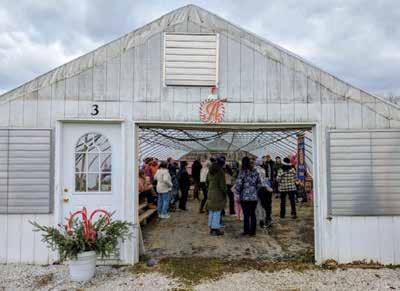
Stuffing the food shelf
CLOCKWISE (l to r): Myles Penney (orange hat) and Cole Wollocko (far right) help the Netrables with their generous donation of food at Williston Community Food Shelf’s annual “turkey day” on Saturday. Some of the 211 turkeys that have been donated awaiting pickup. Dave Sherwood helps sort, date and stock food donations.
OBSERVER PHOTOS BY AL FREY


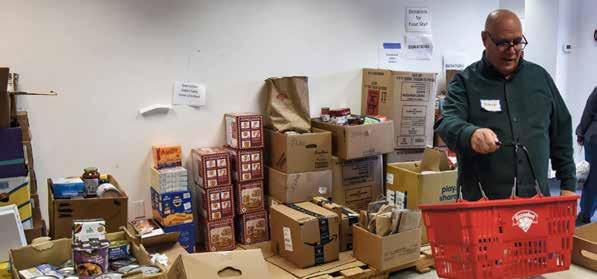
Reindeer games
CLOCKWISE (l to r): On Saturday, little ones meet the pullers of Santa’s sleigh visiting Adams Farm Market from the Vermont Reindeer Farm. Cupid has human and canine admirers. The Williston-Richmond Rotary Club serves up hot cocoa for charity. People gather for carols and reindeer sightings in the Adams greenhouse.

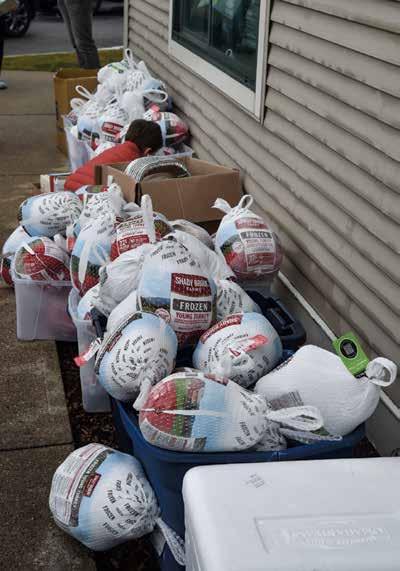
CONTRIBUTED PHOTOS BY
ELIZABETH DAVIDSON, SCOTT ADAMS AND KIM ANTONIOLI
Support Your Local Community
Shop Local This Year
The Facts
Buying at locally owned businesses keeps money close to home.
This holiday season, support local stores. No waiting or worrying about shipping. Your Support Matters
Sponsored by:
Your holiday dollars work harder locally.
Shop Local


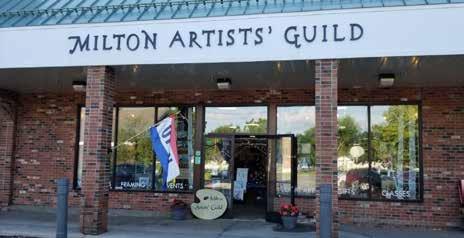

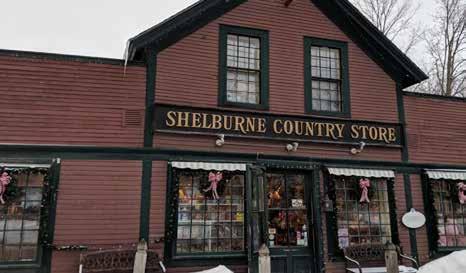
Crafting a circular economy at The Makery
BY CLAIRE MACDONALD Community News Service
On a cold October night, a small group gathered around a table covered with colorful bundles of wool and balls of yarn. Paintbrushes and fabric scraps burst from shelves in the warmly lit room.
Crafters from Burlington, Essex and Jericho made their way to The Makery, a secondhand art supply store in Burlington, to create their own felted dryer ball.
The Makery, a used craft supply store and community art space, opened in November of last year. Co-owners Arianna Soloway and Jessica Webster offer classes on embroidery, knitting and sewing, to name a few, with the goal of making traditionally expensive crafts more affordable and sustainable.
“We wanted there to be a community space where people could come and intentionally source items that we throw away and that create a lot of waste,” Webster said.
Soloway attributes their inspiration for starting The Makery to Burlington’s thriving art scene.
“I think Vermonters are known for being really environmentally conscious, and (I had) the idea that I could link those two things,” she said.
The Makery functions similar to a

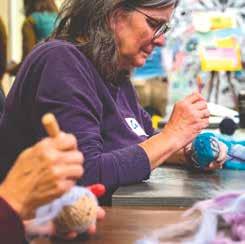
PHOTO BY ANNALISA MADONIA
standard thrift store. Originally, the store took walk-in donations but an overload of items coming in convinced Webster and Soloway to switch to donations by appointment.
They are constantly receiving new inventory.
“Suddenly we get 10 times as many stamps as we’ve ever got before, and we need a new shelving unit,” Soloway said. “It’s a constant, fluid situation … It’s fun and also a little bit crazy that we can never predict

what’s going to be here.”
The co-owners want The Makery to be an accessible, communal space where locals can learn to crochet, craft Halloween costumes, or even make beeswax snack bags. Most classes cost between $15 and $40.
Classes include one-time introductions to different skills, “craft and sips” — a casual environment for individuals interested in learning something new, bringing a drink and socializing — and free Bring Your Own Craft nights.
The Makery aims to provide something for every age; Mini Makers, a class for toddlers, occurs monthly. Plus, the owners run a kids after-school class weekly.
Almost all of The Makery’s adult classes, which are capped at 15 participants, have sold out, Soloway said.
“I think some of that is (because) we’ve been able to keep them really affordably priced,” she said. “Part of how we can do that is by using what we have in the store as our class supplies.”
A particularly popular class taught students how to turn fabric scraps into rope coil basket-making. Other classes, like felted dryer ball-making, have the same element of sustainability tied in.
“I love the concept (that), rather than having everyone’s leftovers go in the garbage,
we share (them),” an attendee of the dryer ball making workshop said. “It’s economical. It’s good for the environment. It’s just a wonderful idea.”
Paul Davis and Jennifer Vincent also attended the felting class for a unique datenight activity.
“We were looking for something experiential to do,” Davis said. “Just going to a restaurant or a bar is a little too close to the usual.”
The co-owners are still developing their class schedule and imagining new classes to host in the future, Soloway said. Ideas she described include a team craft group, or a group for new parents to bring their babies, socialize and craft.
Her ultimate goal is to make art as accessible as possible.
“When I was a kid, I would make art all the time and it didn’t need to have any purpose,” she said. “As you become an adult, you become so much more practical, and (I want) to give people the freedom to try something new. If you don’t like it, bring the stuff back here; and if you do like it, you can feel good about not having spent tons of money trying a new hobby.”
Community News Service is a University of Vermont journalism internship.
C A R E

Students at The Makery in Burlington form dryer balls by felting wool.
in on this location because of its ease of access off Interstate 89 and its supporting hotel and retail amenities.
Hergenrother envisions the facility serving youth sports, college athletics and adult leagues, a more modern alternative to the Shelburne Fieldhouse and the indoor soccer facility shoehorned into the Champlain Valley Fairgrounds — both of which are at full capacity in the winter.
“There are like 30 different sports you can play indoors,” said Hergenrother. “With the amount of interest I’ve heard from people who run leagues, it could basically be booked up.”
Several members of the Williston Planning Commission expressed support for the concept when they reviewed the site plan last week. There are, however, zoning hurdles.
The lot exists in a mixed-use district that was rezoned in 2009 to prevent more “big box” stores, according to Williston Planning Director Matt Boulanger. And while the rounded dome would not resemble a boxy retail store, it would have a similar rectangular foundation and size. As presented, the dome is too tall (75 feet) and has too big a footprint to be approved under the current zoning regulations.
“It’s just not the kind of thing that the zoning anticipates in that area,” Boulanger said.
But the proposal has spurred a conversation on the planning
“This is an appropriate place for such a facility… We are open to working on making it possible.”
Chapin Kaynor Williston Planning Commission
commission about updating the zoning around the existing big box stores. A few years back, the town approved a “form-based” zoning area just to the north to encourage new urban-style development in Taft Corners. The proposed lot for the sports dome
is just outside the form-based code zone.
“We might want to spend some time in the coming months thinking more about what this part of town could become,” Boulanger told planning commission members at last week’s meeting. He said he’s heard from other developers about the possibility of siting a Veterans Affairs hospital, hotels and restaurants in the area. “It’s probably time for the town to do some visioning for this area.”
Another avenue for Hergenrother’s sports dome would be a “specific plan” a process where the zoning could be altered for one specific parcel.
“This is an appropriate place







for such a facility, and it serves a function that we are lacking,” planning commission member












Chapin Kaynor said. “We are open to working on making it possible.”
The red dot indicates the spot at the corner of Harvest Lane and Retail Way where Adam Hergenrother is hoping to build an indoor fieldhouse.
Audit finds delays, gaps in food and lodging inspections
BY ALICE FINNO VTDigger
The Office of the State Auditor found significant shortcomings with how the Vermont Department of Health reviews complaints related to food and lodging establishments, according to a recent report.
The report is the first audit of four planned for the coming months by Auditor Doug Hoffer and his staff, part of an effort to assess how the state government responds to Vermonters’ complaints.
The department’s Food and Lodging program is responsible for ensuring that Vermont restaurants, hotels and other similar establishments, follow the state’s health and sanitation regulations and protocols. The program provides licenses and inspects more than 6,000 food establishments and regulates lodging facilities, while addressing complaints it receives from the public.
The audit selected 45

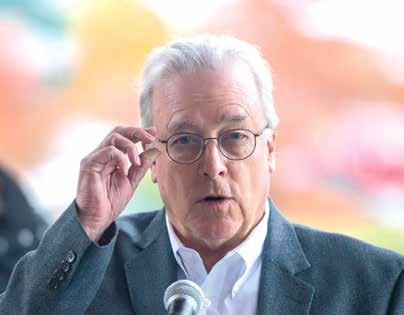
complaints for review out of the 1,081 complaints the program received between 2022 and 2024.
The types of complaints that come in include allegations of unsanitary conditions, bed bug infestations, inadequate cooking and contaminated food equipment. Inspectors have to first verify if
the complaints are true, and if so, recommend corrective actions.
However, the audit found that inspections were not always conducted within the required timeframe, and, in some cases, inspectors did not follow up to verify if the problems were resolved. Of the complaints reviewed, 16 of
them were not investigated in the timeframe required. Seven out of the 10 complaints with more serious allegations were not investigated within the required two days. Two of them were not investigated at all.
Additionally, inspectors closed 18 of the 26 complaints that required corrective actions without confirming if the problems had been resolved. Hoffer said this does not necessarily mean that the owner of the establishment did not address the problem but that the inspectors did not visit the place again to check if they did.
“If you’re calling for a corrective action for a serious problem, you need to make sure that it’s been done and documented, and they were kind of short on that,” Hoffer said.
The audit also found that the Department of Health doesn’t measure the performance of the Food and Lodging program, which is a state requirement. The program is also missing specific policies and procedures for handling complaints.
Hoffer said the auditor’s office will follow up in one year and again in three years to see if the department has implemented their recommendations to improve the program.
The public complaint system evaluated in the audit is just one part of the work carried out by the program, according to Liz Wirsing, the senior program manager for Food and Lodging.
“The report evaluated a small sample of the hundreds of complaints that we receive and follow up on every year, so sometimes other priorities have to take precedence for protecting public health,” Wirsing said.
Still the recommendations are helpful, and the program is already working on implementing them, she said.
“We appreciate the public reaching out to us and sharing their concern,” Wirsing said, adding that people should continue to file complaints. “It’s important information, and it does help alert us sometimes to things that need some follow-up.”

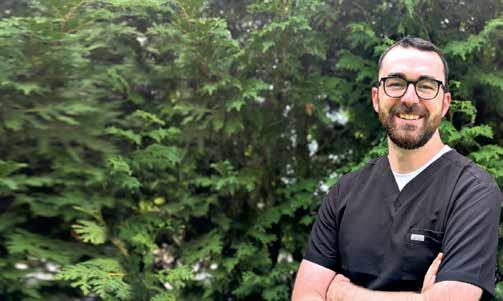
Vermont Auditor of Accounts Doug Hoffer FILE PHOTO BY GLENN RUSSELL/VTDIGGER
Vermont’s Progressive Party enters ‘a new era’
Bill Hunsinger of Ripton elected new party chair
BY SHAUN ROBINSON VTDigger
The state’s third major political party, the Vermont Progressive Party, voted in an almost entirely new bench of statewide leaders at its biennial convention earlier this month.
Among them is a new party chair: Bill Hunsinger of Ripton, who serves as one of two Progressiveendorsed members of that Addison County town’s selectboard. He is the party’s first new chair in close to a decade. Anthony Pollina, a longtime state senator from Middlesex, stepped down this month from the job, which he had held since 2017.
The Progs also elected Cindy Weed, a former state representative from Enosburgh, as vice chair, along with a slate of other officials who oversee the party’s finances and direct its electoral strategy. Ahead of the convention, the party also hired a new executive director: Heather Thomas. Josh Wronski, the party’s former director, left the job in July after nine years.
In all, just four members of the party’s 17-person leadership committee are returning to their posts after the party’s convention, held Nov. 9 at the Old Labor Hall in
Barre. A press release called the changes “a new era for the Vermont Progressive Party.”
Hunsinger said he wants that new era to include a stronger party presence at the most local levels of government. That means giving more candidates for selectboard and school board races a Progressive Party endorsement, he said in an interview, even though few of those seats, anywhere in the state, are filled in party-based elections.
In Burlington — where candidates for city office do run under a party label — Progs control the mayor’s office and have a slim minority of five of 12 seats on the City Council.
According to the party’s website, there are also Prog-backed officials in nonpartisan selectboard seats in Ripton, Brattleboro and Dummerston, as well as in nonpartisan school board seats in Burlington and the Windham Southeast Supervisory Union.
“We’re not trying to make these races partisan,” Hunsinger said Wednesday. “Just, you know — there are Progressives. We’re here. We’re reducing speed limits, and helping organize food drives and clothing drives. It’s that sort of a mentality.”
At the state level, there are three members of the Vermont House and one state senator who

primarily identify with the party’s label. A number of other members of both chambers, and State Auditor Doug Hoffer, identify as Democrat/ Progressives. The party often caucuses with Democrats and its platform aligns with Democrats on many issues.
However, the Progressive caucus disagreed with many Democrats, who control both chambers of the Legislature, on this year’s marquee legislation — Act 73. That’s the law that lays out sweeping changes to how Vermont’s schools are funded and governed. To be sure, Republican Gov. Phil Scott had also insisted legislators advance the law in a form he was amenable to.
Hunsinger said he wants Progs to continue taking a stand against Act 73 in the upcoming
legislative session, which starts in early January. Burlington Rep. Kate Logan, the House Progressive leader, agreed in an interview Thursday that would be a priority for her caucus next year.
At its recent convention, the Progs passed a resolution “to petition the VT Legislature to rescind Act 73, and instead explore options to make the education portion of the Property Tax more fair and equitable in order to ensure that every owner of property in Vermont is contributing proportionally to funding Vermont Schools,” the party’s release said.
Hunsinger described his opposition to the education reform plan, which seeks to consolidate the state’s 119 school districts, as a desire to preserve local control. He charged that the Legislature has been making “broad, almost power-grabby decisions.”
“Our party is going to keep fighting for making sure that our schools are kept in our communities — and our communities are given autonomy over their own schools,” he said.
The party also passed two resolutions at its convention this month focused on major national issues. The party does not run candidates for federal offices, though it counts Vermont’s independent U.S. Sen. Bernie Sanders among its ranks.
One of those measures “condemns the apartheid and ethnic cleansing by the Israeli State” against people in Gaza and calls for an immediate end to all U.S. government funding for the Israeli military, according to the press release. It also states “that Israeli settlers in the West Bank be expelled and the land returned to Palestinians.”
Sanders has been among the most vocal critics of the Israeli government in the U.S. Senate and, along with the other two members of Vermont’s congressional delegation, has called the country’s military campaign in Gaza a “genocide.”
Another resolution “recognizes the critical need for public resistance to and non-compliance with unlawful and unconstitutional actions” by President Donald Trump’s administration.
Hunsinger said he hopes the party can be a home for Democrats who feel that their party, at the national level, isn’t doing enough to resist Trump’s many controversial actions over the first year of his second term.
“The Vermont Progressive Party endorses all facets of resistance, including political action, protests, strikes, boycotts and other acts of non-compliance,” the resolution states, per the release. “We will work in every capacity afforded to us.”








Williston
Bill Hunsinger


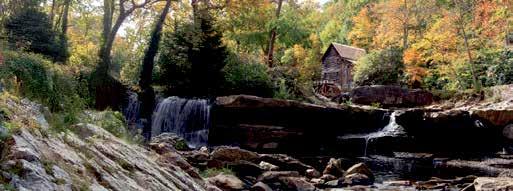
Meet the Mountain State
West Virginia, our 35th state, was once a part of Virginia. But when Virginia voted to secede, or leave, the United States in 1863, West Virginia stayed loyal to the Union. It became its own state on June 20, 1863.
About 1.8 million people live in West Virginia. Charleston is the capital, with about 50,000 people.
Early history
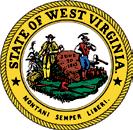
Native Americans have lived in the area of West Virginia for thousands of years. Over the centuries, native people were hunters and gatherers, grew corn and other crops, made pottery and built mounds. In 1671, the first Europeans arrived in the region.
Natural resources
West Virginia is known for its natural wonders. It attracts many outdoor-loving tourists, especially from eastern cities. It is the only state to rest entirely in the Appalachian Mountains.
Mountain biking, hiking, fishing and rock climbing are some favorite activities.
Mini Fact: Mountain streams draw fishers, who catch catfish, walleye and bass.
World Caverns. Organ Cave is the 16thlongest cave in the U.S. Oil, natural gas, stone and salt are also important resources.

Underground beauty is found in caves such as Seneca Caverns, Smoke Hole Caverns and Lost


Try ’n’ Find
Working in West Virginia
The state is the largest producer of coal in the U.S.; the energy from coal powers not only West Virginia but other states. Mining coal has been an important industry for West Virginians for many decades.
People also work in the lumber industry, in agriculture, in health care and manufacturing.
Many world-famous glass studios are in the state, including Blenko in Milton and Fenton Art Glass in Williamstown. The Huntington Museum of Art, the West Virginia Museum of American Glass in Weston and the Oglebay Institute Glass Museum in Wheeling are famous for their exhibits of art glass.
Sports

West Virginians are fans of football and basketball teams from West Virginia University and Marshall University. Minor league baseball, hockey and soccer teams also compete in the state.
Words that remind us of West Virginia are hidden in this puzzle. Some words are hidden backward or diagonally, and some letters are used twice. See if you can find:

Next Week: Have a safe holiday!
West Virginians To Know

• Chuck Yeager is best known for being the first person officially to fly faster than the speed of sound, flying nearly 700 mph in 1947. He became most famous for this feat after author Tom Wolfe wrote about him years later in “The Right Stuff.”
Yeager broke the sound barrier when he was a test pilot for the U.S. Air Force. He had served as a fighter pilot during World War II. He was born in Myra, West Virginia, and grew up in West Hamlin, West Virginia.

• Anna Jarvis helped turn Mother’s Day into a national holiday. She lived in Grafton, West Virginia, and later in Philadelphia. The first national Mother’s Day was celebrated in those two cities in 1908.
• Steve Harvey, a famous comedian and game show host, was born in Welch, West Virginia. His father was a coal miner. Harvey is also an author and has won seven Daytime Emmy Awards. He has hosted a television series for kids called “Little Big Shots.”




Weston: Why did the scarecrow win an award? Whitney: Because he was out standing in his field!

Founded by Betty Debnam
photo by Angela George
photo courtesy Library of Congress
“organ” formation at Organ Cave in West
Blowing glass at
Oglebay Institute Glass Museum.
Chuck Yeager
Anna Jarvis
Steve Harvey
league baseball, hockey and soccer teams also compete in the state.
Try ’n’ Find
Words that remind us of West Virginia are hidden in this puzzle. Some words are hidden backward or diagonally, and some letters are used twice. See if you can find:
BIKING, CAVES, CHARLESTON, COAL, FISHING, GAS, GLASS, HARVEY, HIKING, JARVIS, LUMBER, MINING, MOUNTAIN, OIL, RESOURCES, SECEDE, SPORTS, UNION, WEST VIRGINIA, YEAGER.
Cook’s Corner Apple Cookies
You’ll need:
• 1 cup sugar
• 1/2 cup butter, softened
• 1/4 cup milk
• 1 egg
• 2 cups flour
What to do:
• 1/2 teaspoon salt
• 1 teaspoon baking powder
• 2 teaspoons cinnamon
• 1 cup apples, chopped

Mini Jokes
Weston: Why did the scarecrow win an award?

Whitney: Because he was out standing in his field!
Eco Note

• 3/4 cup butterscotch chips
1. In a large bowl, mix together sugar and butter until creamy.
2. Add the milk and egg and stir until blended.
3. In another bowl, mix together the flour, salt, baking powder and cinnamon.
4. Add dry ingredients to the creamy mixture and mix well. Stir in apples and butterscotch chips.
5. Drop by spoonfuls onto a greased baking sheet.
6. Bake in a preheated 375-degree oven for 10 minutes. Makes 4 dozen cookies.
You’ll
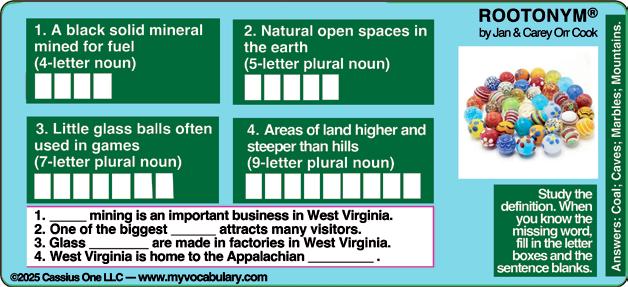


Insects are rapidly disappearing even in places far from farms or cities. A 20year study of a remote meadow in Colorado found that flying insect numbers have fallen by more than 70%, with hotter summers as the strongest culprit. The discovery adds to mounting evidence that climate change is eroding biodiversity on a global scale, undermining food webs and threatening species that rely on insects for survival. Their decline has far-reaching consequences for agriculture and human health.
For later:
Look in your newspaper for articles with news about West Virginia.
Teachers: Follow and interact with The Mini Page on Facebook!



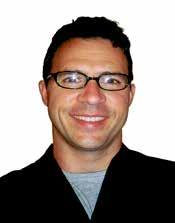
By Jim Miller
Dear Savvy Senior,
What are the early signs of Parkinson’s disease? My husband was recently diagnosed after noticing a slight thumb tremor but we’re wondering if we missed any other early warning signs.
Curious Wife
Dear Curious,
Recognizing the early signs of Parkinson’s disease is challenging because the symptoms are often subtle and/or similar to those in other health conditions, which means they can easily be overlooked, dismissed or misdiagnosed.
Parkinson’s disease, which afflicts around 1 million Americans, is a degenerative
SAVVY SENIOR
What are the early signs of Parkinson’s Disease?
disorder that occurs when the brain’s dopamine-producing neurons die or become impaired. This happens in the part of the brain that controls movement, which can cause tremors, stiffness and difficulty with walking, balance and coordination.
The symptoms usually begin gradually and get worse over time, and the progression of symptoms is often different from one person to another.
Some people with Parkinson’s become severely disabled, while others may experience only minor motor disruptions.
While the cause of Parkinson’s disease is unknown, scientists believe genetics and environmental factors (exposure to certain toxins) play a key role.
Most people with Parkinson’s first develop the disease around age 60 or older, and men are more likely to develop it than are women.
EARLY WARNING SIGNS
Parkinson’s disease is difficult to diagnose because there’s no definitive test to confirm it.
Doctors, usually neurologists, will do an examination and evaluate a combination of warning signs, but symptoms can vary greatly by patient, which often leads to confusion and misdiagnosis. That said, here are some of the key signs and symptoms everyone should be aware of.
Restless sleeping: Talking in your sleep, sleepwalking and/or acting out your dreams by kicking or jerking. This is a REM sleep behavior disorder and one of the strongest and earliest pre-diagnostic symptoms of Parkinson’s disease.
Loss of smell: Not being able to smell certain foods very well like bananas, dill pickles or licorice. This early symptom occurs in around 70 to 90 percent of Parkinson’s patients.
Constipation: Problems with digestion and bowel movements are a big problem for people with Parkinson’s, and an early sign that can occur up to 20 years before this disease is diagnosed.
Changes in handwriting:
Writing may become harder to do, and your handwriting may appear much smaller than it has in the past.
Soft voice: According to the Parkinson’s Foundation, 89 percent of people with Parkinson’s will have speech and voice disorders, which often shows up first in volume of the voice, meaning that you may speak more softly.
Tremors: Slight shaking or tremor in your finger, thumb, hand or chin. The tremor usually happens at rest, and when you move the extremity, it may disappear. This is the most common and recognizable outward sign of Parkinson’s disease, but by the time tremors start, the brain has already lost more than half of its dopamine-producing cells.
Slowed movement: Over time, Parkinson’s disease can slow movements, making simple tasks difficult and time-consuming. Your steps may become shorter when you walk. It may be difficult to get out of a chair.
You may drag your feet as you try to walk.
Masked Face: The muscles in the face experience the same gradual stiffening as in the rest of the body, which results in lack of smiling and facial expressions.
Impaired posture and balance: Stooping, leaning or slouching when you stand, and/ or balance problems can all be an early sign of Parkinson’s.
Having these symptoms doesn’t necessarily mean that a person has Parkinson’s disease. But if you are experiencing any of them, and you’re over age 60, you should consider talking with your doctor, who may order a DaT scan or Syn-One (Skin Biopsy) test to help diagnose it. Early detection leads to earlier treatment, which can improve a person’s overall quality of life.
For more information, visit the Parkinson’s Foundation at Parkinson.org.
Send your questions or comments to questions@ savvysenior.org, or to Savvy Senior, P.O. Box 5443, Norman, OK 73070.





TODAY’S HISTORY:
• In 1789, the United States observed a day of Thanksgiving declared by George Washington in celebration of the new Constitution.
• In 1922, Egyptologist Howard Carter became the first person to enter Tutankhamen’s tomb in 3,000 years.
• In 2000, nearly three weeks after Election Day, Florida’s presidential election results were certified in favor of George W. Bush.
TODAY’S FACT:
• To preserve the length of the holiday shopping season, President Franklin D. Roosevelt signed legislation in December 1941 that decreed Thanksgiving would always fall on the fourth Thursday of November. Thanksgiving had been celebrated on the last Thursday of November, which in some years was the fifth, since 1863.
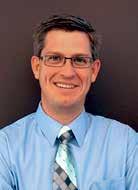


SOLUTION FOUND ON PAGE 22
Find 7 differences
SOLUTION ON PAGE 22

MASTER PLAN SURVEY
Have you taken the Williston Recreation & Parks Master Plan Survey yet? The deadline to submit is Monday, Dec. 8. There is still time for you to share your thoughts, visions and more. Your input is important to the plan and to the future of Williston recreation and community parks.
Take the survey online at www.willistonrec.org, or stop by the office at 7878 Williston Rd. for a paper copy.
COMMUNITY EVENTS
HOLIDAY DECORATING CONTEST
The Holiday Decorating Contest is fast approaching. This friendly competition provides an excellent opportunity for you to showcase your holiday spirit and contribute to the festive atmosphere in the community. Prizes include bragging rights, gift baskets and lawn signs for homes, plus $1,000 worth of marketing for businesses.
The contest is free to enter and open to Williston residents and businesses. To sign up, visit www.willistonrec.org. The registration deadline is Sunday, Dec. 14. Judging will take place Dec. 18-21.
VOCAL PERCUSSION & IMPROVISATION WORKSHOP
Ages 13-plus. Root7, Vermont’s contemporary acappella group for 18 years, will host sight-reading sing-alongs of winter and holiday music. For beginner, intermediate and experienced vocalists who want to learn and work in groups. Tuesday, Dec. 2 and Friday, Dec. 5. Times are 7-9 p.m. Held at the R.E.C. Zone- 94 Harvest Lane. Free, no registration required.
ADULT PROGRAMS
SENIOR COMMUNITY MEALS
Ages 60-plus. The Recreation Department and Age Well will offer a free meal from 12-12:30 p.m. for anyone aged 60-plus and their spouse, regardless of age. Pre-registration is required, and spots are limited. Check-in begins at 11:30 a.m. with meals served at noon. Following lunch, enjoy a free senior-focused program from 12:30–1:30 p.m. Check out the meal menu on the recreation website, www.willstonrec.org. Location: the R.E.C. Zone, 94 Harvest Lane.
PICKUP PROGRAMS
Come out and play, stay fit and meet new people. These programs are open to all experience levels, meeting once a week October through May. Register at www.willistonrec.org.
— Basketball: There are programs for men 20-plus, men 30-plus and women 19-plus.
— Table Tennis: adults 18-plus. Players should bring their own paddles (a limited number of loaner paddles are available).
— Volleyball: adults 18-plus.
JAZZERCISE CARDIO SCULPT
Instructors will show you how to take it high or low. Cardio Sculpt Low, Tuesdays and Fridays, 8:30-9:30 a.m. and Mondays and Wednesdays, 11 a.m.-12 p.m. Cardio Sculpt High, Tuesdays and Wednesdays, 4:45-5:45 p.m. and Sundays, 8:30-9:30 a.m. Instructor: Kit Sayers.
TAI CHI INTRO
Ages 50-plus. Mondays, 9:30-10:30 a.m. Free. Instructor: Adina Panitch.
BONE BUILDERS
Ages 50-plus, Tuesdays and Thursdays, 10-11 a.m. Free. Instructors: Ann Naumann and Joyce Oughstun.

WE’RE HIRING!
The City of South Burlington’s Department of Public Works seeks dedicated staff for these open positions:
• Plant Operator
• Public Services Specialist
• Stormwater Maintenance
• Stormwater Superintendent
• Highway Maintenance
• Highway Mechanic
and vision
paid time off, and more!
LEARN MORE AND APPLY NOW ONLINE
SENIOR STRENGTH & FUNCTIONAL MOBILITY
Ages 50-plus. Wednesdays and Fridays, 10-10:45 a.m. Free. Instructor: Jazmine Averbuck.
ZUMBA GOLD
Ages 18-plus. Thursdays, 8:45-9:45 a.m. Free. Instructor: Ciara Gregory.
YOUTH PROGRAMS
SWIM LESSONS
Ages 6 months-2.5 years. The Recreation Department and The Edge on Morse Drive in Essex are teaming up to offer preschool group swim lessons. The lessons introduce swimming techniques and increase safety skills around the water. Lessons are on Saturday and Sunday mornings. Dates and times at www. willistonrec.org.
RECKIDS BASKETBALL
Ages 4-5 (coed). This is a parent/child program designed to teach the fundamentals of the game. Each week youngsters will be introduced to new skills and fun activities that will enhance their learning. The program meets on Fridays in January and February. Instructors: Rec Department staff. Fridays, Jan. 9- Feb. 6, 5:15-6 p.m. $42.
ROOKIES BASKETBALL
Grades K-2. There are separate boys’ and girls’ programs. The programs meet on Saturdays in January and February. The
one-hour sessions consist of a practice and scrimmage. Parent volunteers are needed to coach. Sign up when registering your child. Saturdays, Jan. 10- Feb. 14. Boys, 8-9 a.m.; girls, 9:10-10:10 a.m. $48.
YOUTH BASKETBALL
Grades 3-6. There are separate boys’ and girls’ leagues for grades 3-4 and grades 5-6. Teams meet twice a week with weekday practices and Saturday games. Parent volunteers are needed to coach. Sign up when registering your child. Practices begin in December; Games start in January. Deadline to register is Dec. 2.
LEARN TO SKI/RIDE
Grades K-8. The program is held at Cochran’s Ski Area in Richmond and is lesson-based with the opportunity to free ski/ ride at the end of each day. Program meets Wednesdays from 2:30-4:30 p.m. and starts in January. Transportation is available after school from Williston Schools. Early-bird registration is Dec. 21 to get pricing of $90.
DRIVERS EDUCATION
Ages 15-17. Focusing on defensive driving techniques, there will be 30 hours of classroom activities and weekly, individually scheduled, behind-the-wheel lessons consisting of 45 minutes of instruction and 45 minutes of observation and a remote orientation session to begin the program. There are a limited number of spots available in the upcoming course that starts on Sunday, Dec. 7.




OBITUARIES
flowers, please consider donating to the UVM Home Health and Hospice.
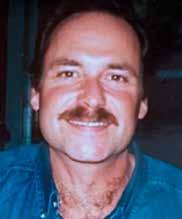
Earl Richard Heavner III of Richmond passed away Nov. 17, 2025, after a long battle with cancer. His wife, Patti, their dogs, family and close friends were by his side.
A Celebration of Life for Dick was held Nov. 22, at Ready Funeral Home, Essex Jct.
The family respectfully requests that in lieu of
Arrangements are in the care of the Ready Funeral and Cremation Services. To send online condolences, please visit www.readyfuneral.com.
Alfred J. Parsons
Alfred J. Parsons, 84, of Williston, VT, passed away Nov. 14, 2025, at the McClure Miller Respite House following a brief illness.
He was predeceased by his wife, Joy, in October of this year, as well as his daughter, Lauren Morrill.
A graveside service was held on Wednesday, Nov. 19 at Deer View Cemetery in Williston.
Arrangements have been entrusted to the care of Ready Funeral & Cremation Services.
To send online condolences to the family, please visit www. readyfuneral.com.

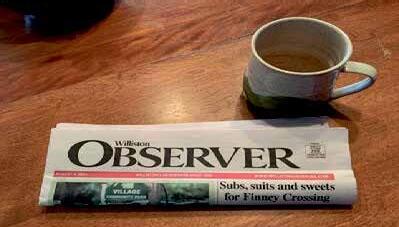
set, excellent condition, 29 volumes + 4 indexes. Williston. 802-373-7740.
LEGAL
Notice of Public Hearing TOWN OF WILLISTON Dec.16, 2025, 7:00 PM Town Hall Annex Meeting Room
To participate remotely: zoom.us/join or call (646) 558-8656 Zoom Meeting ID 873 0175 0819
The Williston Planning Commission will hold a public hearing to consider amendments to the Williston Unified Development Bylaw on December 16, 2025 at 7:00 PM in the Town Hall Annex Meeting Room in the Town Hall Annex at 7878 Williston Road. The public hearings may also be attended virtually on Zoom. Public comment at these hearings is welcomed and encouraged.
Hearing Summary: proposed amendments to the Town’s Unified Development Bylaw related to correction of citations to the new 2025 Williston Comprehensive Plan, Clarifications of procedural and development standards, and policy changes related to signs, application procedures, required public and private improvements, affordable housing income limits, residential growth target, driveway widths, and transfer of development rights, as follows:
Citation corrections and errors or omissions ONLY in Chapters: 1,2,3,5, 8, 9,10, 12, 16, 17, 18, 20-46
In Chapter 14 Off-Street Parking and Loading. Clarify provision for the use of structured parking and solar canopy to increase number of permitted off-street parking spaces
15.3 Neighborhood Parks. Proposed bylaw amendments clarify the language about requirements for neighborhood parks. Setbacks (multiple chapters)-setbacks and average setbacks throughout all zoning districts to be merged into a table and clarified. Not changing setbacks, changing avg definition and adding flexibility for properties with 2 front yards.
In 4.5.2 –Certificate of Appropriateness -Signs are exempt from COA
In 6.2.8, 6.2.9 –Preapplication actions –amendments to preapplication procedures.
6.5.3.3 –Notifications –amendments to written notification requirements
7.1.6.2 Guarantees for Public and Private Improvements –require surety at 110% of all improvements, public or private 11.3.6 –Affordable Housing Income Limits -allows flexibility for affordable home income qualification. Dwellings affordable at 80% AMI can be sold/rented to households earning 80-100% AMI; dwellings affordable at 100% AMI can be
11.4 Residential Growth Target -Growth Management system historically meant to limit growth of new housing. Now we have a severe housing shortage, and the State has mandated housing targets. This section’s language flips the Residential Growth Target from a maximum to a minimum, to meet or exceed the stated housing targets.
Table 13.A Driveway Width Standards –added, for clarity and to allow smaller widths for smaller developments.
19.5 Transfer of Development Rights –Allows TDR from lands in ARZD or conservation areas in other zoning districts to lands within any other zoning district (that allows residential uses) except the ARZD. View the proposed changes at The Planning Office, 7900 Williston Road or online: https://bit.ly/willistonbylawhearing Contact Matt Boulanger at the Williston Planning Office at (802) 878-6704 or mboulanger@willistonvt.org for additional information.










































